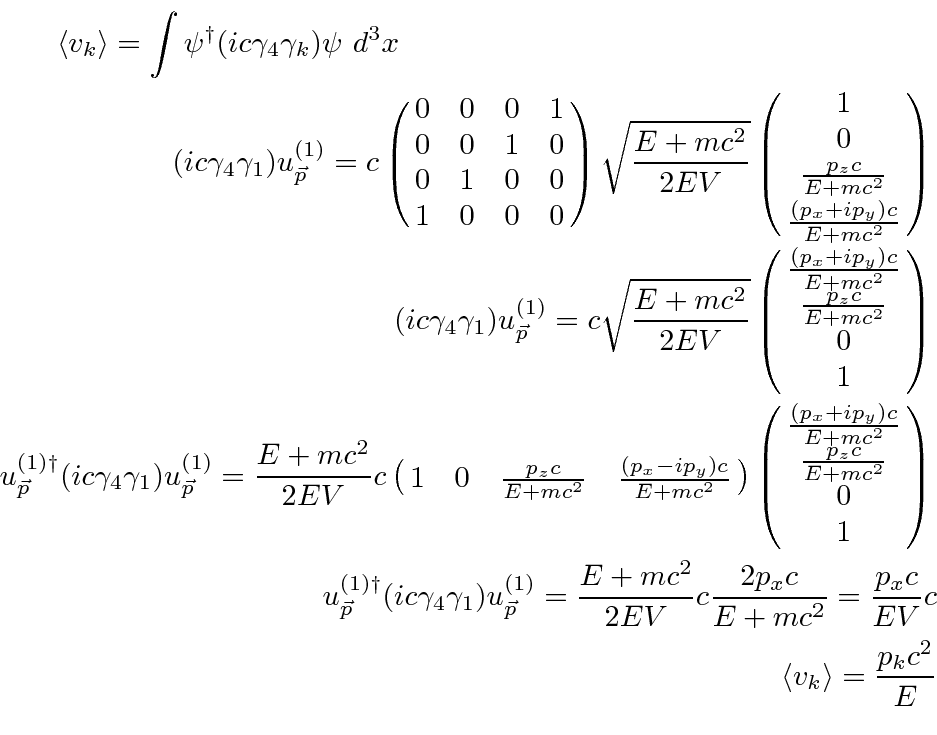Next: Solution of the Dirac Up: Phenomena of Dirac States Previous: Expansion of a State Contents

The expected value of a component of the velocity exhibits strange behavior when negative and positive energy states are mixed.
Sakurai (equation 3.253) computes this.
Note that we use the fact that
![]() have ``negative energy''.
have ``negative energy''.
![\begin{eqnarray*}
\langle v_k\rangle=\int\psi^\dagger (ic\gamma_4\gamma_k)\psi ...
...mma_k u^{(r')}_{\vec{p}} e^{2i\vert E\vert t/\hbar}\right] \\
\end{eqnarray*}](img4388.png)
The Zitterbewegung again keeps electrons from being well localized in a deep potential raising the energy of s states. Its effect is already included in our calculation as it is the source of the Darwin term.